Cutleaf Japanese Maple
Acer palmatum var. dissectum
Aceraceae (Maple Family)
▲ younger, red-leaved form
▲▼ mature, red-leaved form
▲▼ mature, red-leaved form
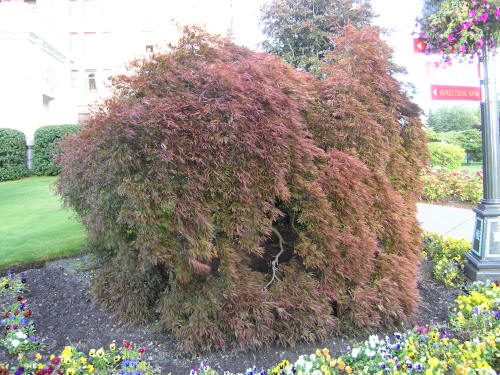
▲▼ mature, red-leaved form
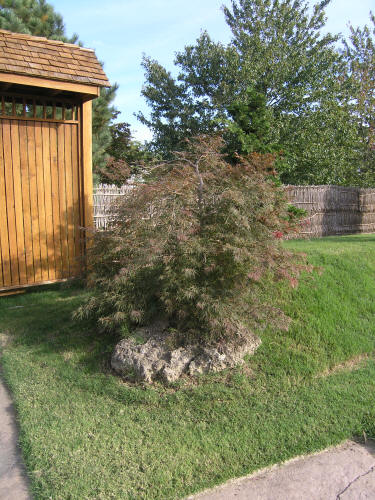
▲▼ green-leaved form

▲▼ green-leaved form
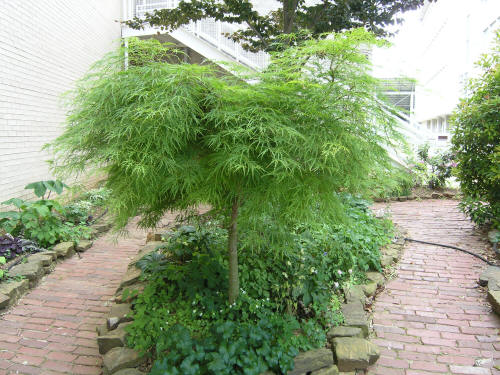
▲▼ green-leaved form
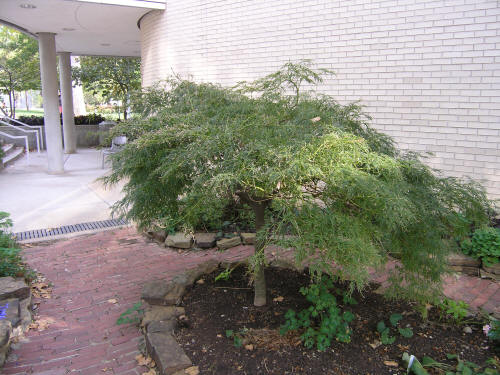
▲▼ green-leaved form
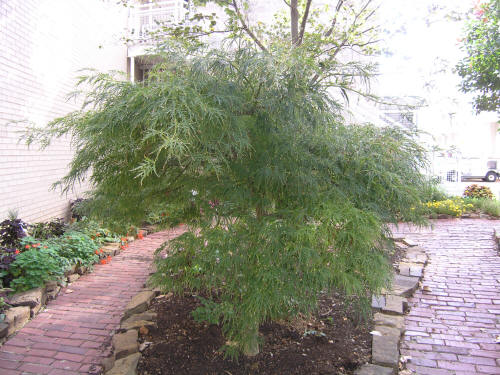
▲▼ green-leaved form

▲▼leaves

▲▼ leaves
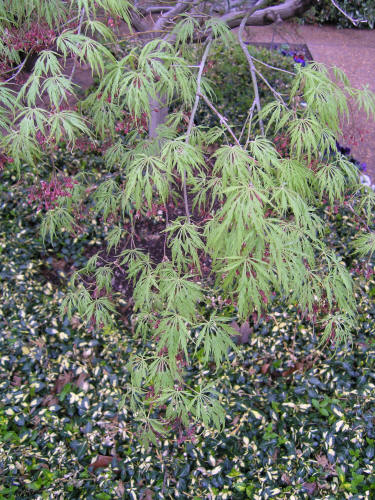
▲▼ leaves
Location on Missouri State University campus: on north side of Karls Hall (green-leaved form)
Acer palmatum
'Dissectum:'
Cutleaf Japanese Maple
·
leaves
opposite, deciduous, simple, palmately 5-9-lobed; lobes very deep and serrate on
margins; leaves 2-5" long and wide; species foliage color is dark green and
glabrous above and below, but many cultivars have reddish leaves; may turn
yellow, orange, red or purple in fall
·
stems
slender, glabrous, green to red when young; gray with age
·
bark
is light to dark gray and smooth
·
prefers partial shade, but can tolerate full sun (if sufficiently mulched) or
deeper shade (if green color leaves); prefers moist, well-drained, high organic
matter soil
·
generally grows 15-25' tall and possibly wider in open, tiered canopy; may grow
40-50' in wild and some ‘Dissectum’ cultivars may only reach 4-5' tall
·
slow
to medium growth rate; faster when young
·
many
cultivars/varieties exist: common ones in trade include:
o
var. atropurpureum—
has reddish leaves and
stems
o
‘Dissectum’ –
has finely divided leaves almost to leaflets with
more deeper serrations on lobes
§
Usually grafted onto regular Japanese maple standard to form a weeping or
spreading canopy
§
More sensitive to drought and heat than some Japanese maple cultivars, often
causing browning of leaf tips
·
Similar species
§ Acer japonicum: Full-Moon Maple
·
Has similar growth habit as Japanese maples, but more and more shallow lobes
than Japanese maple
§
Acer circinnatum:
Vine Maple
·
U.S. native to Pacific Northwest—similar to full-moon maple, but larger growing